Osaka Museum of Oriental Ceramics Guide: Pricey Tickets but Worth A Visit
The Museum of Oriental Ceramics in Osaka boasts an outstanding collection of East Asian ceramics, with a particular emphasis on Chinese and Korean works. Although the tickets are on the pricier side, the museum is worth a visit for ceramics enthusiasts as well as arts and crafts lovers. Beyond the beautiful displayed pieces, there’s more to appreciate here, which will be detailed in our guide. Additionally, the museum is located in a serene and picturesque part of Osaka and I think it can be considered non-touristy and under-the-radar.
Overview
Quick Links
Location: The museum is located on the beautiful Nakanoshima Island, which is a long, narrow island in the center of Osaka. Nakanoshima is a key area for business, cultural, and leisure activities in the city.
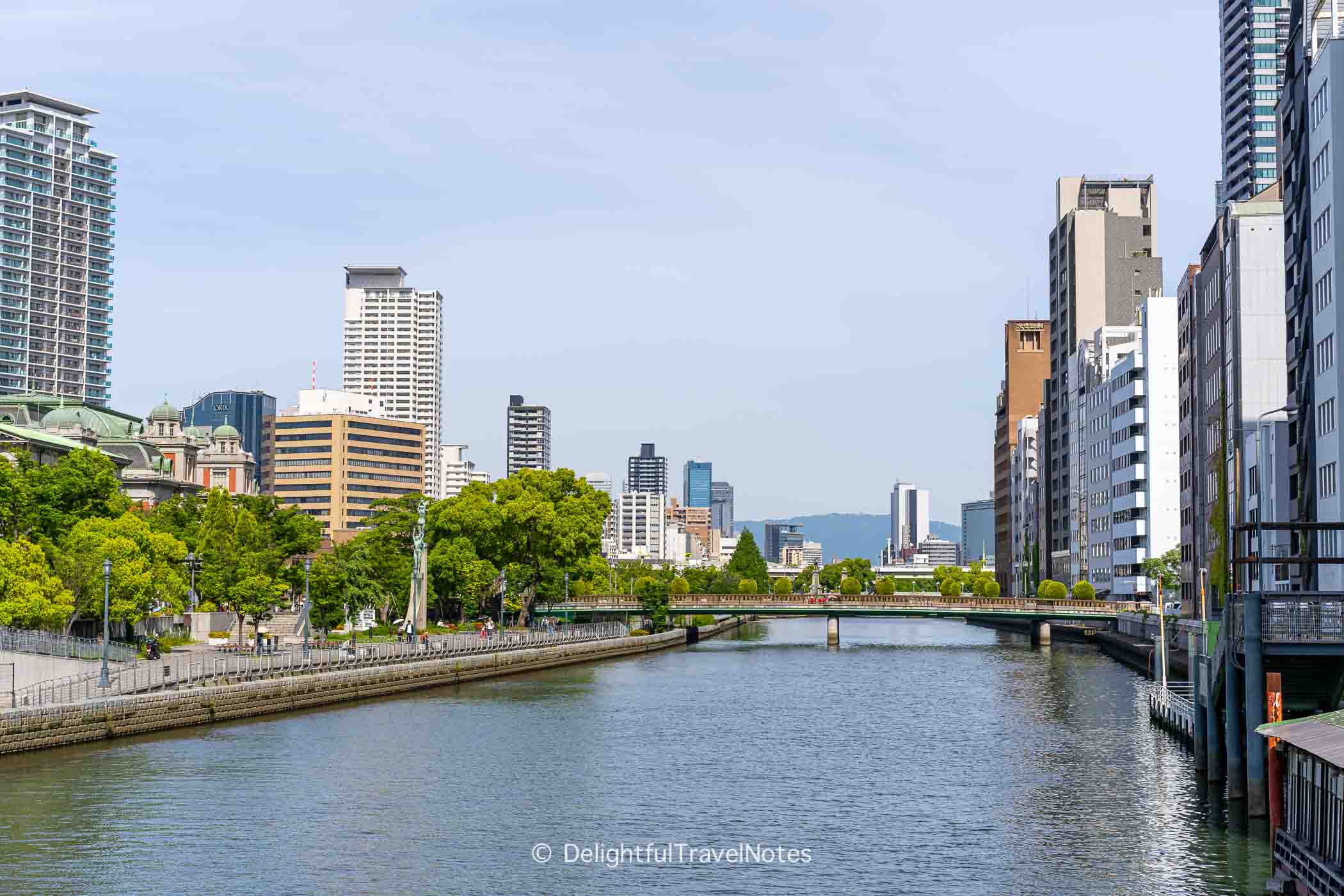
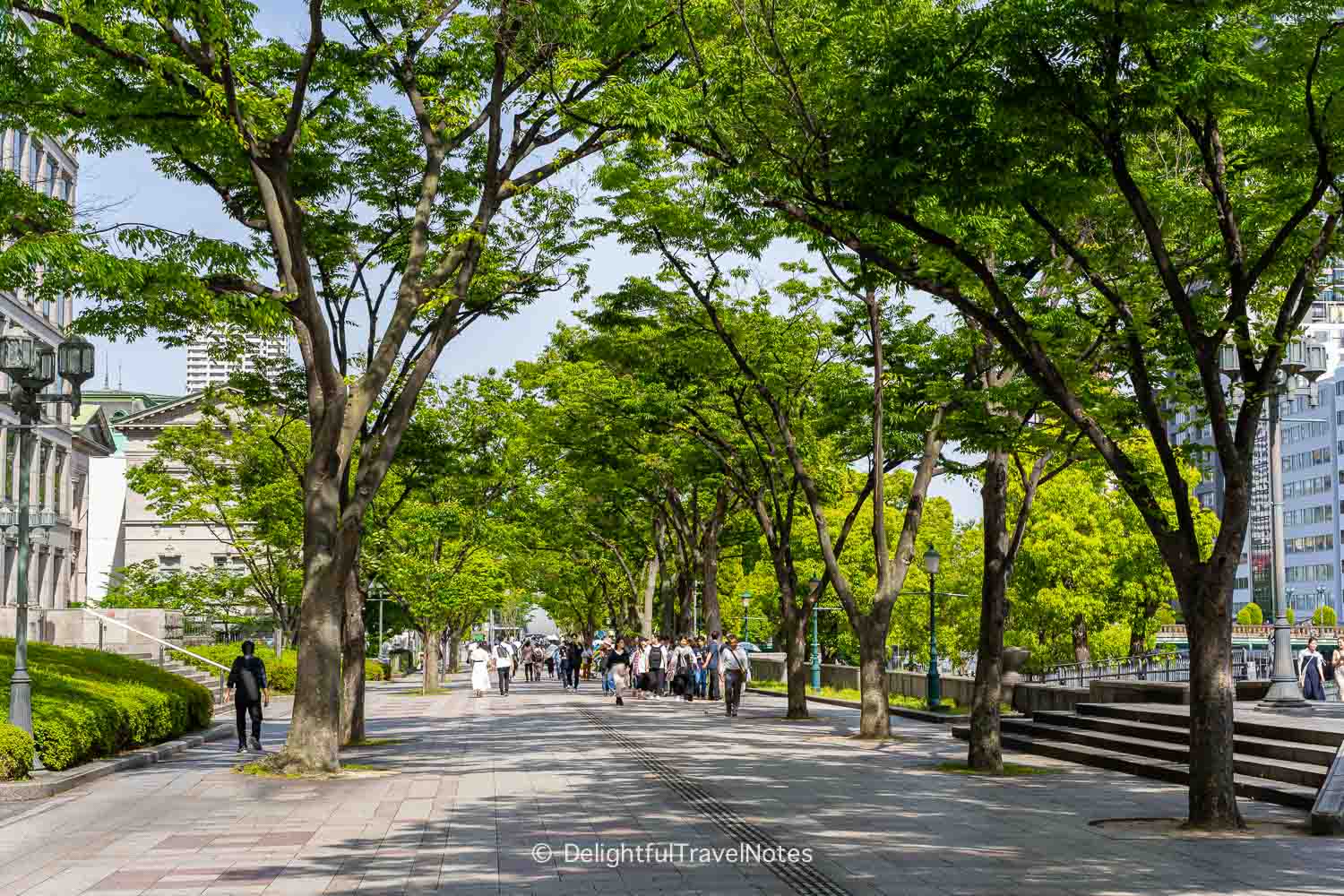
Besides the Museum of Oriental Ceramics, Nakanoshima Island also features Nakanoshima Park, the oldest public park in Osaka, which has rose gardens and serene river views. The park seems to be a popular spot for relaxation as we could see many locals picnicking, exercising, and walking their dogs. The island also houses historical buildings such as the Nakanoshima Library and the Osaka City Central Public Hall, as well as several art museums like the National Museum of Art, which is included in the Osaka Amazing Pass.
How to get there: the nearest station is Nakanoshima Station on the Keihan Main Line. If you take the metro like us, you can get to Yodoyabashi Station and take a pleasant, short walk to the museum.
Entrance fees: tickets cost 1,600 yen per adult, which is relatively pricey compared to most museums we have visited in Japan. I think the higher price is partly due to the museum’s recent renovations. Despite the cost, we enjoyed our visit as we love collecting ceramics and learning more about the art. The building itself has some architecturally interesting corners, and we were also impressed with some of the display techniques used to showcase the ceramics.
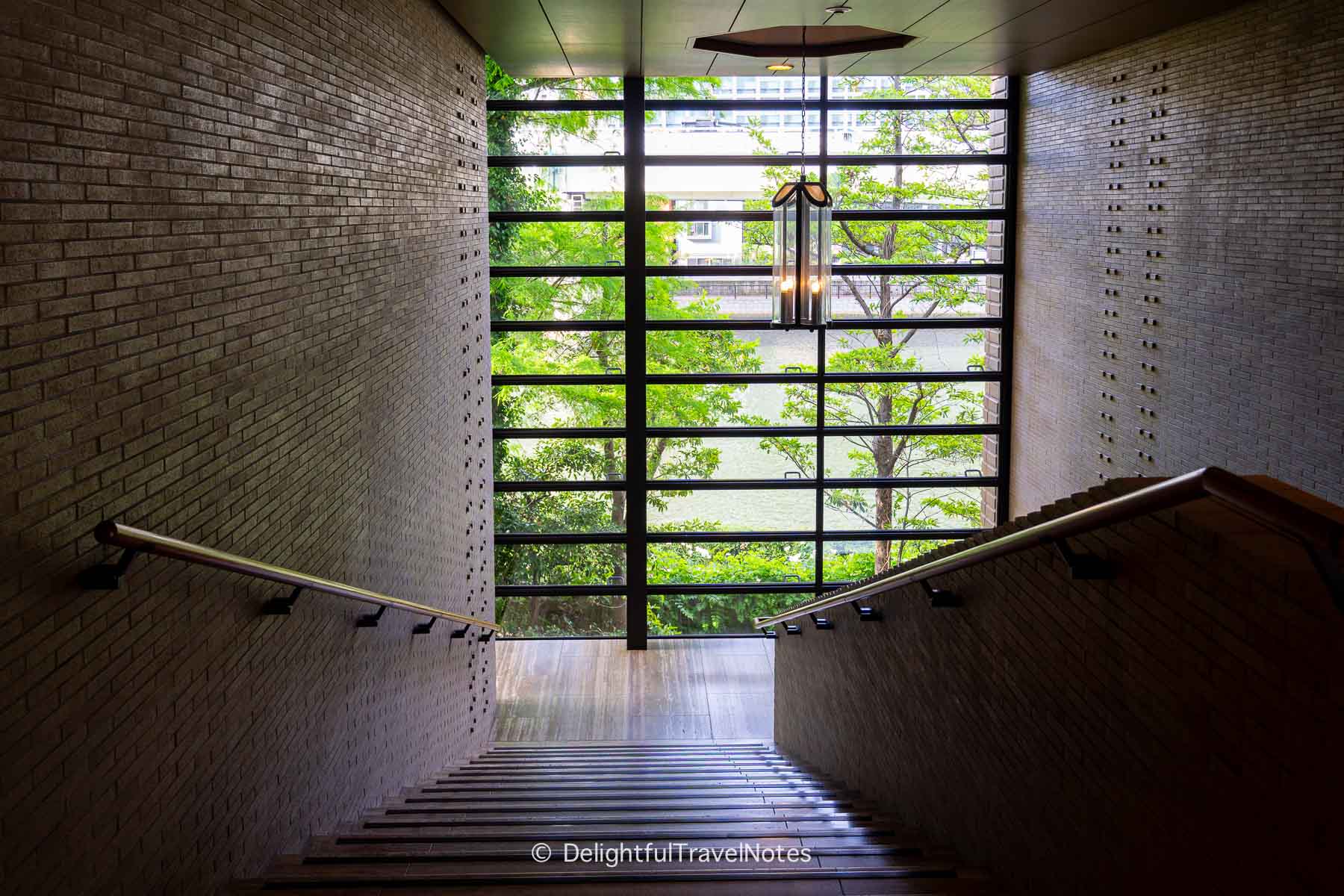
Visiting Guide
The visiting route begins on the second floor. After purchasing your tickets, you will approach a staircase which we thought looked pretty stunning when we visited as it was bathed in the afternoon lights streaming through the floor to ceiling windows.
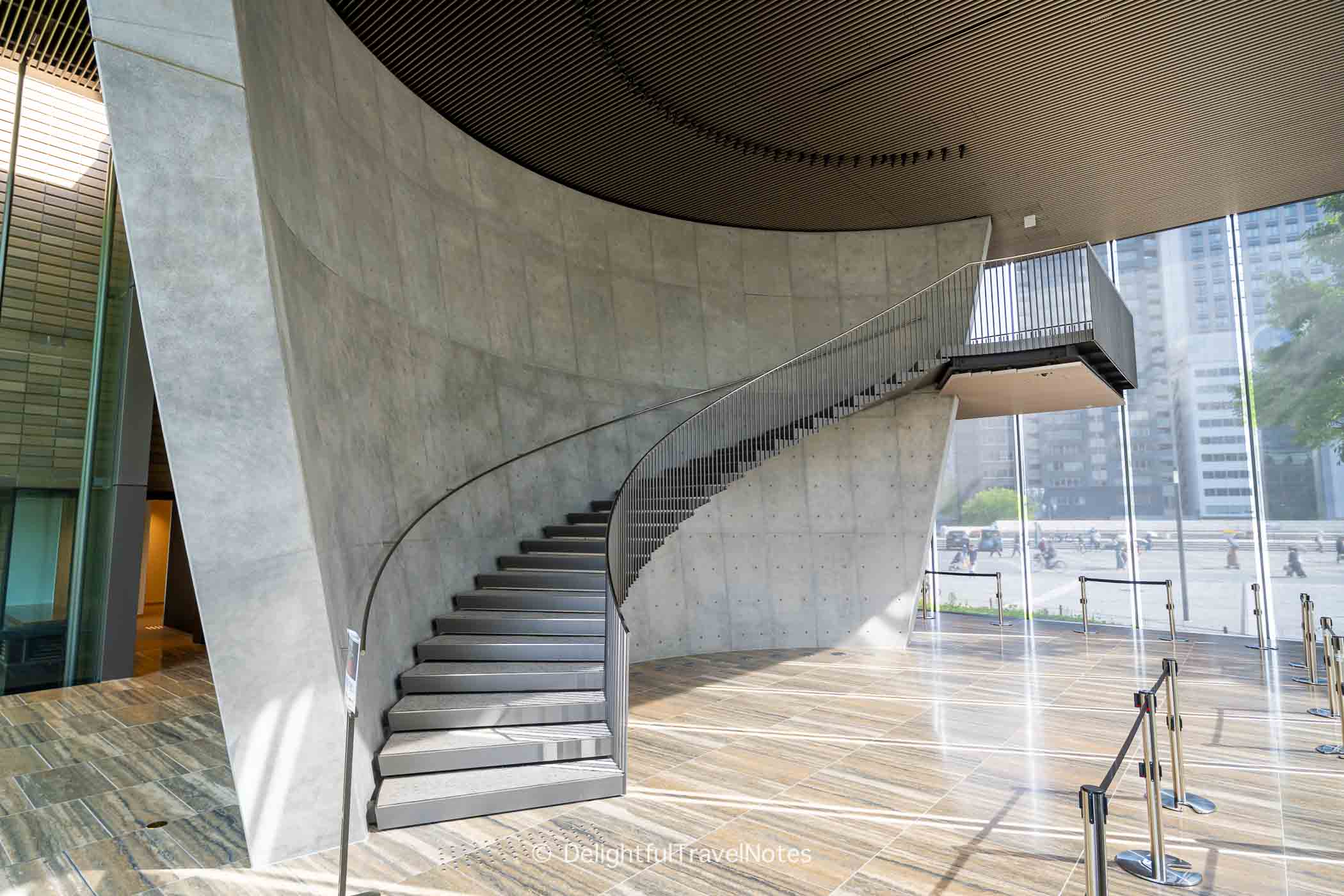
The museum highlights the evolution of ceramic techniques and aesthetics over centuries, with collections displayed in rooms categorized by country — primarily Korea and China — and by style and color. English translation is provided for all signs and explanations which we greatly appreciated. Another thing we appreciated was that photos were allowed in all rooms.
A highlight of the museum is its collection of Chinese and Korean celadon ware, known for its beautiful green (or pale blue) glaze. There’s also a large collection of Buncheong ware and Joseon white porcelain, reflecting Korea’s rich ceramic traditions. The Chinese collection includes masterpieces from various dynasties, such as the Tang, Song, Yuan, Ming, and Qing Dynasties.
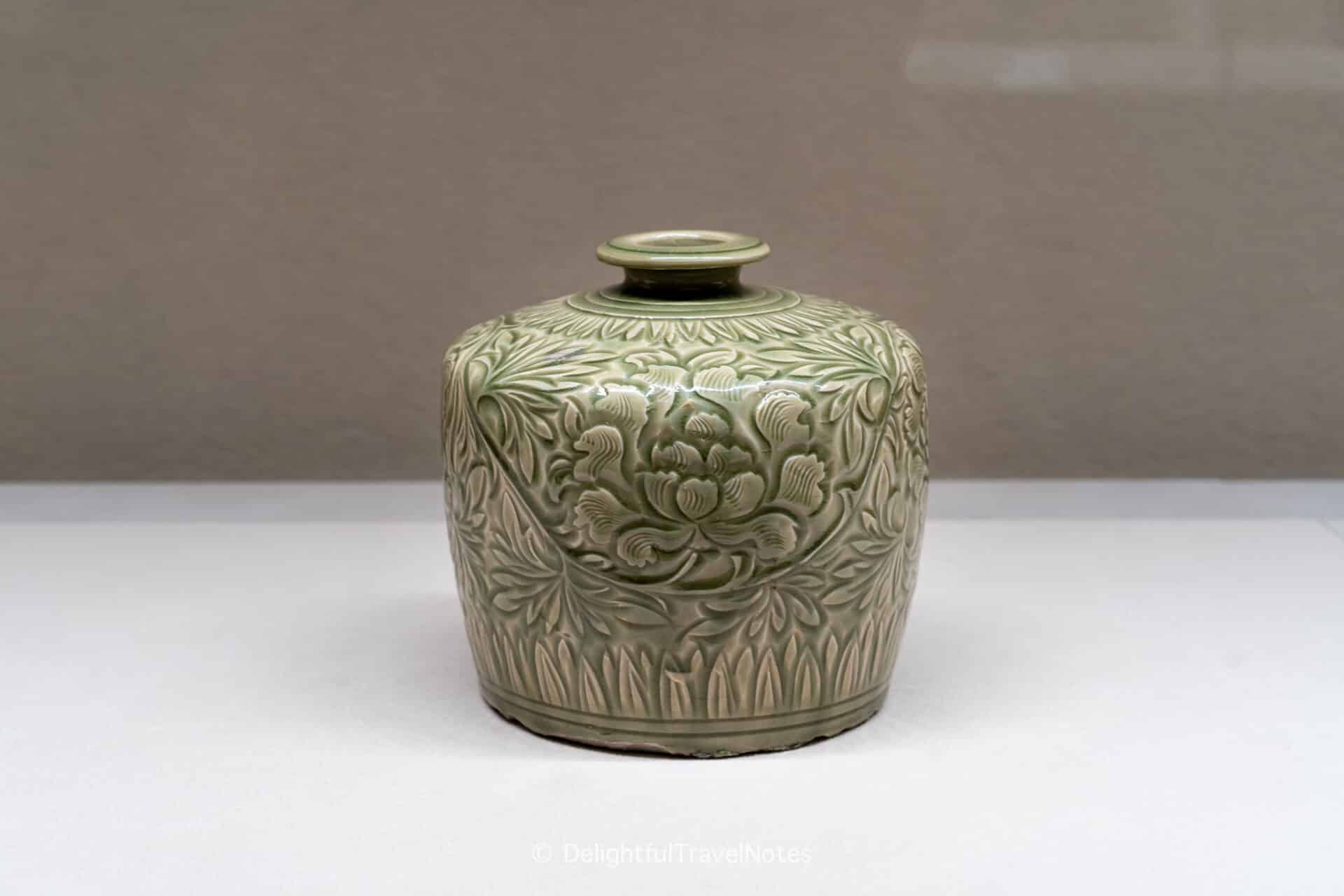
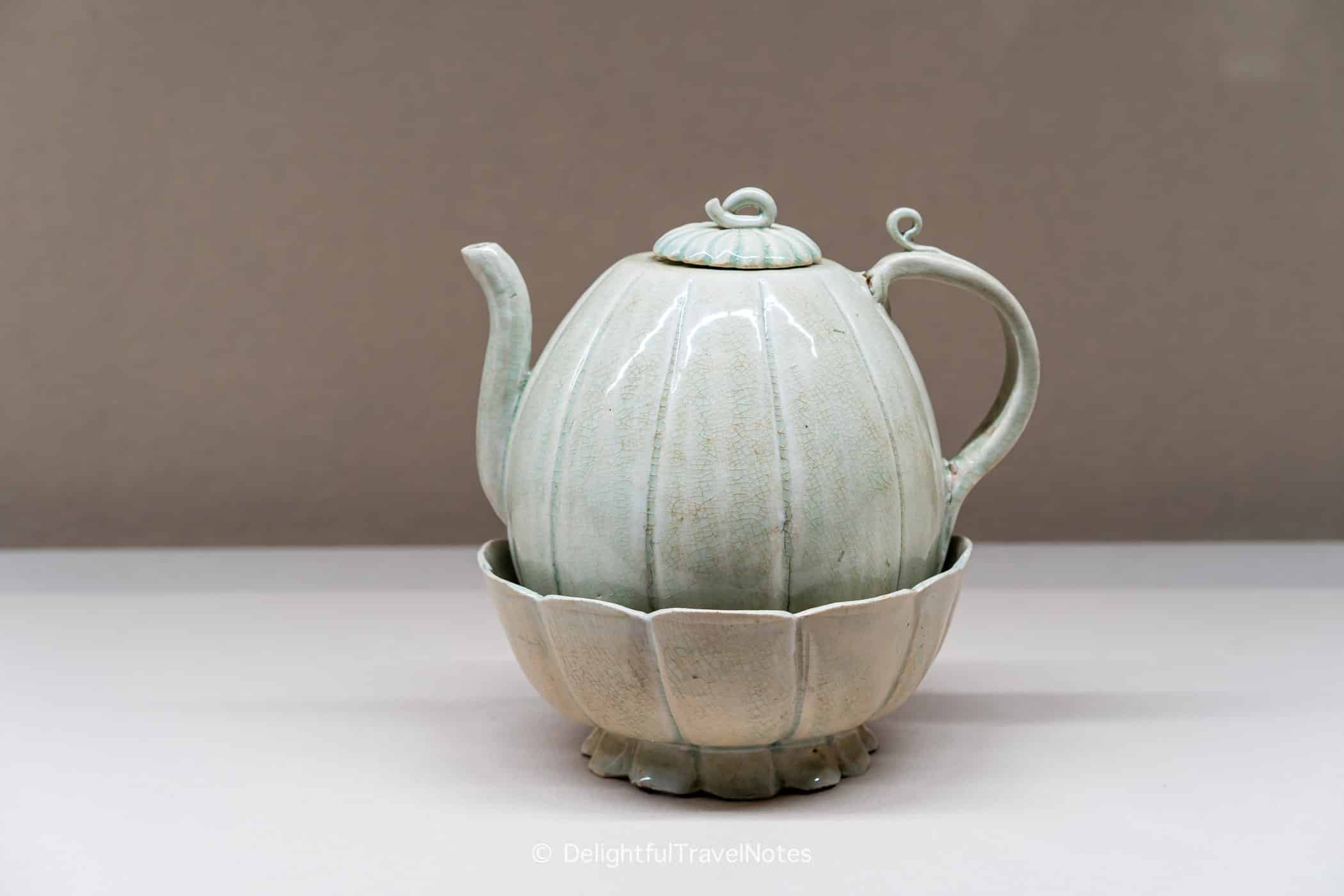
There is only one small room dedicated to Japanese ceramics. We had expected to see more Japanese pieces, and this was the one aspect that let us down a bit.
As already mentioned, the way the artifacts were showcased also left a lasting impression on us as it was distinctly different and memorable. The layout, arrangement of the pieces, display cabinets, and optimal use of lighting all combine to showcase the ceramics beautifully.
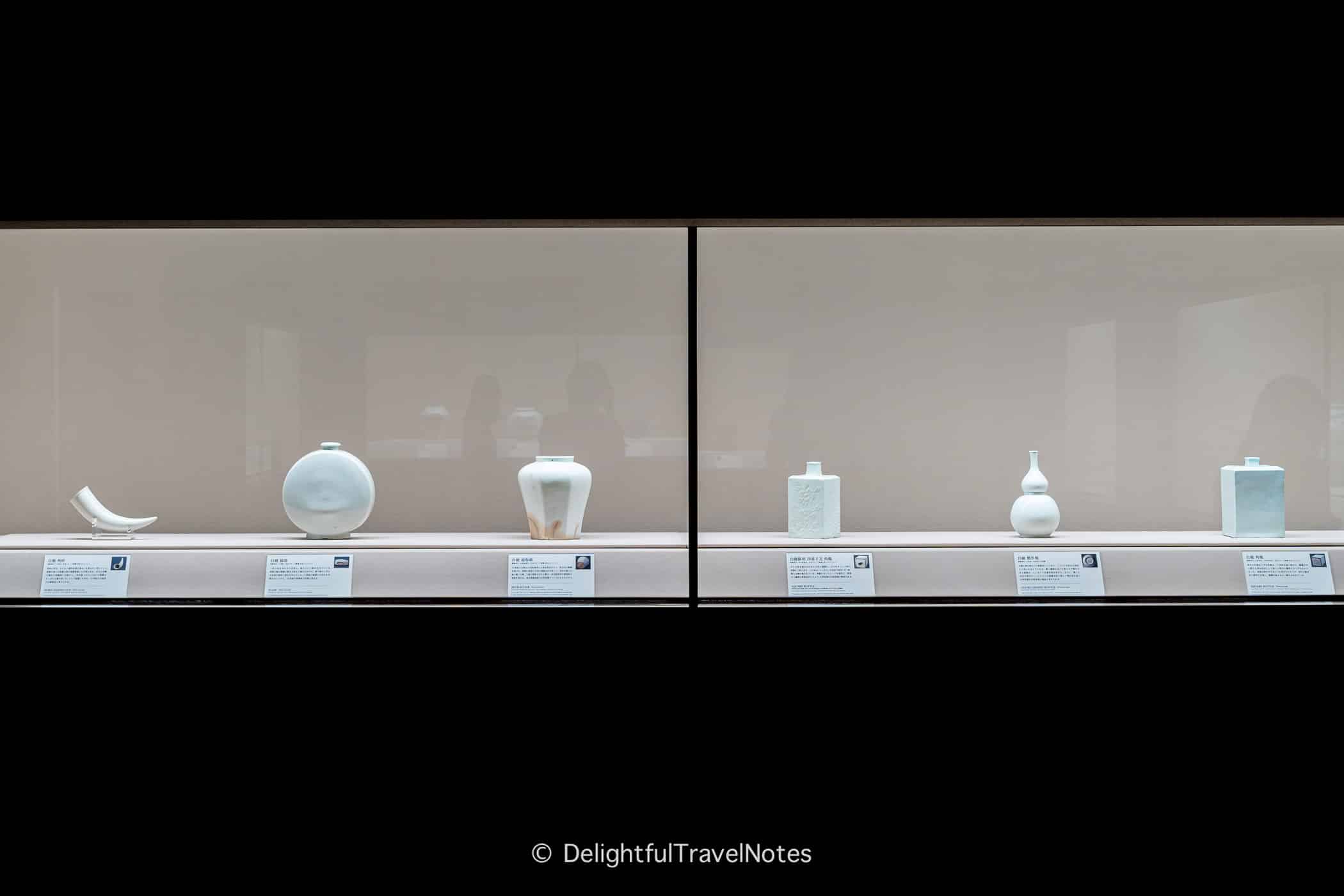
As soon as we stepped into the first exhibition room, with the naked eye, we could immediately notice the excellent quality of the lighting. It was gentle, even, yet bright enough to illuminate the artifacts and their details without causing any glare. The light was clear, and the color rendering was very accurate. Having just completed a home renovation project where a significant part involved updating to high-quality lighting with high UGR (Unified Glare Rating) for anti-glare and high CRI (Color Rendering Index), we were impressed with the museum’s display.
The museum explained that the ideal way to appreciate the subtle hues and texture of ceramics is under natural light. As a result, they installed the first natural light display in the world. They developed an optical duct system that takes in natural light to illuminate only the object inside the display case, creating a condition similar to viewing the object exposed to natural daylight. The system also includes light boxes to supply artificial light when natural light isn’t enough.
Some notable pieces were displayed on a turntable, allowing visitors to appreciate their beauty from all angles. One such piece is a small statue of a woman from the Tang Dynasty, showcasing intricate details and a serene expression. Another one is a blue porcelain jar, recognized as an Important Cultural Property, featuring exquisite craftsmanship and vibrant colors.
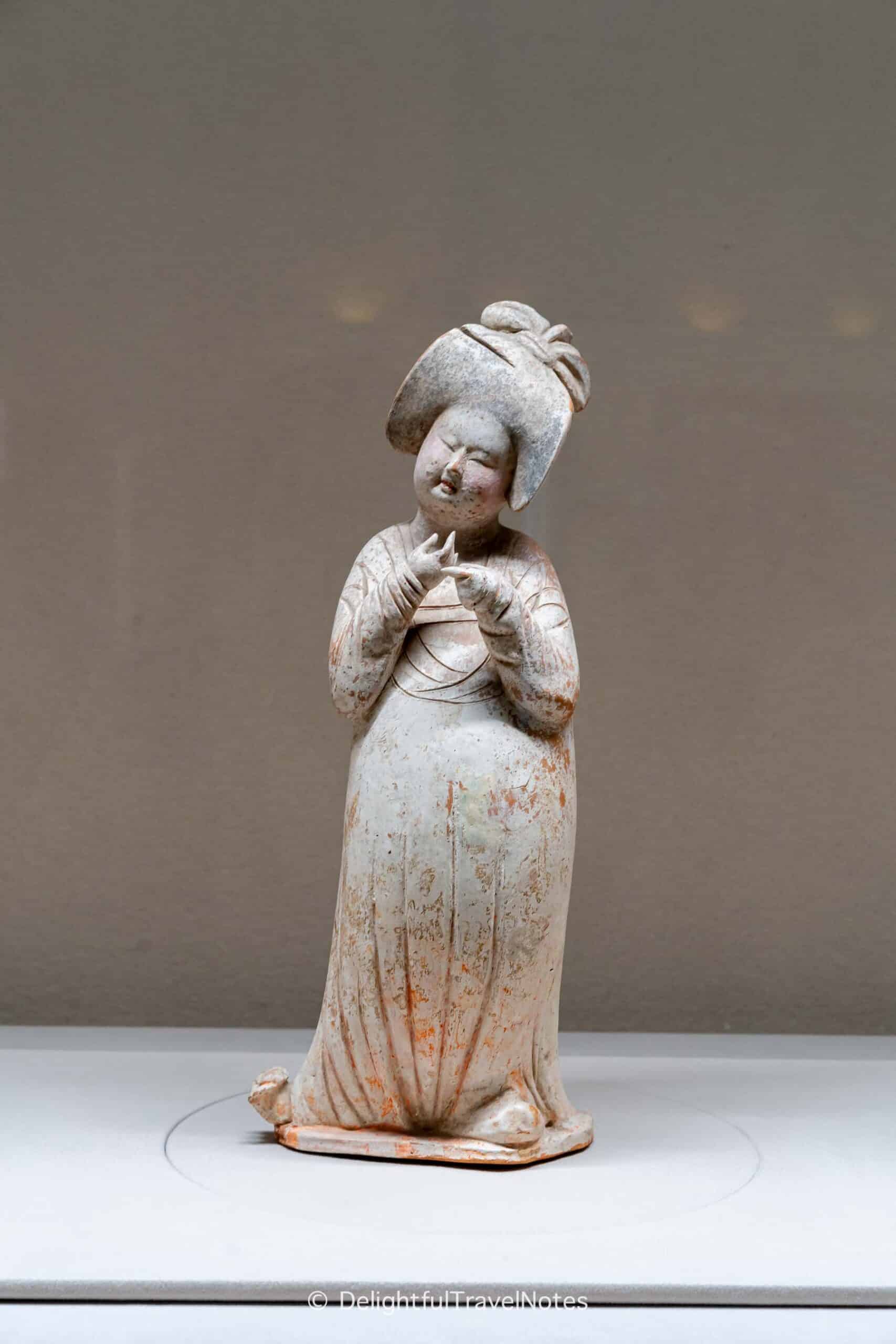

Final Thoughts
Overall, we thought The Museum of Oriental Ceramics provided an interesting and educational visit for those who love ceramics. It is a nice under-the-radar spot to add to your Osaka itinerary, offering a relaxing way to spend a couple of hours. This museum, along with Sumiyoshi Taisha, were our favorite places on our Osaka trip.
After visiting the museum, you can take a walk at the Nakanoshima Park. Our visit was in May when many types or roses were in full bloom, attracting numerous locals.


Explore More
The Thousand Kyoto Review: Wonderful Hotel Right Next To Kyoto Station
How To Plan An Amazing Trip to Kyoto (Beyond General Japan Travel Tips)
Top Crowded Attractions in Kyoto and How to Avoid the Masses